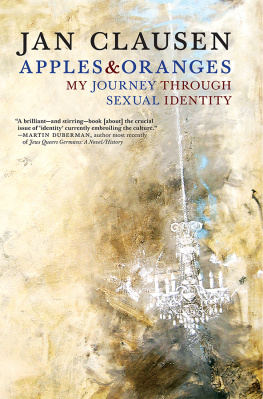ORANGES
THE custom of drinking orange juice with breakfast is not very widespread, taking the world as a whole, and it is thought by many peoples to be a distinctly American habit. But many Danes drink it regularly with breakfast, and so do Hondurans, Filipinos, Jamaicans, and the wealthier citizens of Trinidad and Tobago. The day is started with orange juice in the Colombian Andes, and, to some extent, in Kuwait. Bolivians dont touch it at breakfast time, but they drink it steadily for the rest of the day. The play lunch, or morning tea, that Australian children carry with them to school is usually an orange, peeled spirally halfway down, with the peel replaced around the fruit. The child unwinds the peel and holds the orange as if it were an ice-cream cone. People in Nepal almost never peel oranges, preferring to eat them in cut quarters, the way American athletes do. The sour oranges of Afghanistan customarily appearas seasoning agents on Afghan dinner tables. Squeezed over Afghan food, they cut the grease. The Shamouti Orange, of Israel, is seedless and sweet, has a thick skin, and grows in Hadera, Gaza, Tiberias, Jericho, the Jordan Valley, and Jaffa; it is exported from Jaffa, and for that reason is known universally beyond Israel as the Jaffa Orange. The Jaffa Orange is the variety that British people consider superior to all others, possibly because Richard the Lionhearted spent the winter of 1191-92 in the citrus groves of Jaffa. Citrus trees are spread across the North African coast from Alexandria to Tangier, the city whose name was given to tangerines. Oranges tend to become less tart the closer they are grown to the equator, and in Brazil there is one kind of orange that has virtually no acid in it at all. In the principal towns of Trinidad and Tobago, oranges are sold on street corners. The vender cuts them in half and sprinkles salt on them. In Jamaica, people halve oranges, get down on their hands and knees, and clean floors with one half in each hand. Jamaican mechanics use oranges to clear away grease and oil. The blood orange of Spain, its flesh streaked with red, is prized throughout Europe. Blood oranges grow well in Florida, but they frighten American women. Spain has about thirty-five million orange trees, grows six billion oranges a year, and exports more oranges than any other country, including the United States. In the Campania region of Italy, land is scarce; on a typical small patch, set on a steep slope, orange trees are interspersed witholive and walnut trees, grapes are trained to cover trellises overhead, and as many as five different vegetables are grown on the ground below. The over-all effect is that a greengrocers shop is springing out of the hillside. Italy produces more than four billion oranges a year, but most of its citrus industry is scattered in gardens of one or two acres. A Frenchman sits at the dinner table, and, as the finishing flourish of the meal, slowly and gently disrobes an orange. In France, peeling the fruit is not yet considered an inconvenience. French preferences run to the blood oranges and the Thomson Navels of Spain, and to the thick-skinned, bland Maltaises , which the French import not from Malta but from Tunisia. France itself only grows about four hundred thousand oranges each year, almost wholly in the Department of the Alpes Maritimes . Sometimes, Europeans eat oranges with knives and forks. On occasion, they serve a dessert orange that has previously been peeled with such extraordinary care that strips of the peel arc outward like the petals of a flower from the separated and reassembled segments in the center. The Swiss sometimes serve oranges under a smothering of sugar and whipped cream; on a hot day in a Swiss garden, orange juice with ice is a luxurious drink. Norwegian children like to remove the top of an orange, make a little hole, push a lump of sugar into it, and then suck out the juice. English children make orange-peel teeth and wedge them over their gums on Halloween. Irish children take oranges to the movies, where they eat them while they watch the show, tossing thepeels at each other and at the people on the screen. In Reykjavik, Iceland, in greenhouses that are heated by volcanic springs, orange trees yearly bear fruit. In the New York Botanical Garden, six mature orange trees are growing in the soil of the Bronx. Their trunks are six inches in diameter, and they bear well every year. The oranges are for viewing and are not supposed to be picked. When people walk past them, however, they sometimes find them irresistible.
The first known reference to oranges occurs in the second book of the Five Classics , which appeared in China around 500 B.C. and is generally regarded as having been edited by Confucius. The main course of the migration of the fruitfrom its origins near the South China Sea, down into the Malay Archipelago, then on four thousand miles of ocean current to the east coast of Africa, across the desert by caravan and into the Mediterranean basin, then over the Atlantic to the American continentsclosely and sometimes exactly kept pace with the major journeys of civilization. There were no oranges in the Western Hemisphere before Columbus himself introduced them. It was Pizarro who took them to Peru. The seeds the Spaniards carried came from trees that had entered Spain as a result of the rise of Islam. The development of orange botany owes something to Vasco da Gama and even more to Alexander the Great; oranges had symbolic importance in the paintings ofRenaissance masters; in other times, at least two overwhelming invasions of the Italian peninsula were inspired by the visions of paradise that oranges engendered in northern minds. Oranges were once the fruit of the gods, to whom they were the golden apples of the Hesperides, which were stolen by Hercules. Then, in successive declensions, oranges became the fruit of emperors and kings, of the upper prelacy, of the aristocracy, and, by the eighteenth century, of the rich bourgeoisie. Another hundred years went by before they came within reach of the middle classes, and not until early in this century did they at last become a fruit of the community.
Just after the Second World War, three scientists working in central Florida surprised themselves with a simple idea that resulted in the development of commercial orange-juice concentrate. A couple of dozen enormous factories sprang out of the hammocks, and Florida, which can be counted on in most seasons to produce about a quarter of all the oranges grown in the world, was soon putting most of them through the process that results in small, trim cans, about two inches in diameter and four inches high, containing orange juice that has been boiled to high viscosity in a vacuum, separated into several component parts, reassembled, flavored, and then frozen solid. People in the United States used to consume more fresh oranges than all other fresh fruits combined, but in less than twenty years the per-capita consumption has gone down seventy-five per cent, as appearances of actual oranges in most of the UnitedStates have become steadily less frequent. Fresh, whole, round, orange oranges are hardly extinct, of course, but they have seen better days since they left the garden of the Hesperides.


















